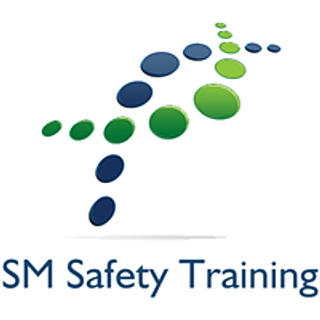What Is A Dynamic Risk Assessment
- steven mullan
- Jan 11, 2024
- 5 min read
Written by Steven Mullan 11/01/24

This article explores the concept of dynamic risk assessments — an advanced risk management tool that provides real-time assessments of rapidly evolving risks. Unlike traditional risk assessments, dynamic risk assessments adapt to change, making them ideal for high-risk, unpredictable environments.
Risk assessments play a critical process in any industry or sector. But they’re especially important in construction, with the highest number of fatal workplace accidents in 2022/2023.

Risk assessments involve identifying potential threats or hazards and determining the possible impacts they may have on an organisation or team’s operations. Traditional risk assessment methodologies, such as those outlined by the Health and Safety Executive (HSE), have provided significant value in ensuring safety and operational continuity. However, in today’s fast-paced and complex world, high-risk organisations often call for more flexible and responsible risk management.
This is where dynamic risk assessments come into play.
What’s A Dynamic Risk Assessment
As the name suggests, a dynamic risk assessment is a proactive, real-time risk management process designed to assess and respond to risks that can evolve rapidly or unexpectedly. Unlike traditional risk assessments that usually occur during the planning stage of a project or operation, dynamic risk assessments happen throughout the entire operation or project. These assessments adapt to changes as they occur, making them particularly suitable for high-risk and unpredictable environments.
A dynamic risk assessment is often a more advanced approach to risk management that recognises the fluidity of risk factors, particularly in high-pressure or volatile work environments. They’re also used by lone workers— those who work by themselves without direct supervision, such as security staff, delivery drivers, engineers and health workers.
In many ways, dynamic risk assessments are the next step in risk management, keeping organisations ahead of the curve by providing an accurate, updated snapshot of their risk landscape. This dynamic view of risk makes this type of assessment invaluable in situations with static risk assessments that may sometimes fall short in predicting evolving threats or hazards.
Traditional Vs Dynamic Risk Assessments: How Do They Differ?
Traditional risk assessments and dynamic risk assessments are both designed to manage and mitigate risks in the workplace. But they differ significantly in approach and application.
Traditional Risk Assessments: Structured And Planned
Outlined and established: Formal risk assessments typically follow a predetermined, structured process. The HSE, for example, breaks down the standard risk assessment into five steps:
Identify hazards in the workplace
Decide who might be harmed and how
Evaluate the risks and take action to prevent them
Record your findings
Review the risk assessment.
Follow a clear schedule: These assessments are typically carried out at set intervals (annually, quarterly, etc.) or before specific projects or operations commence. For this reason, traditional risk assessments may require extensive data collection and detailed analysis to ensure that all potential risks are adequately considered and addressed. However, these assessments focus on foreseeable risks based on past experiences and data.
Dynamic Risk Assessments: Flexible And Happening In Real-Time
Adaptive to evolving threats: If traditional risk assessments are structured and well-planned, dynamic risk assessments are all about adapting to risks and threats as they emerge. Rather than being a one-off process, a dynamic risk assessment can be a continuous activity, happening anywhere from the beginning to the end of a project.
Can be conducted on an ad hoc basis: Dynamic risk assessments can also be conducted “on the spot.” For example, in a firefighting scenario, a team of firefighters would be hard-pressed to predict all possible hazards in advance. As they progress, new threats may emerge, such as structural collapses or backdrafts. In this case, the use of dynamic risk assessments enables the team to continually monitor the environment and make quick, informed decisions.
Need for capable decision-makers: Another distinguishing feature of dynamic risk assessments is the need for competent decision-makers who can judge risks in real-time. This requires comprehensive training and experience to recognise potential threats, understand their implications, and make crucial decisions swiftly and effectively.
However, it should be noted that a dynamic risk assessment cannot and should not replace a formal risk assessment. Traditional risk assessments are a legal requirement — part of an employer’s legal obligation towards the health and safety of their workers and the public. Under the Management of Health and Safety at Work Regulations 1999 (MHSWR), employers are required to follow a legal framework for safe work systems. This framework includes conducting proper risk assessments to identify and minimise workplace risks.
How To Conduct A Dynamic Risk Assessment: What To Consider And Steps To Take
Whilst there is no single accepted methodology for conducting dynamic risk assessments, organisations and workers can follow this logical decision-making process.
Step one: Evaluate the situation: The first step in a dynamic risk assessment is to appraise the situation; the person responsible for the assessment must analyse the threat situation and apply their professional judgement to determine the most appropriate course of action. Actions must be weighed carefully against risks and the welfare of other workers; the public and the environment must also be considered.
Step two: Take action: The person responsible for the dynamic risk assessment can then respond by either:
Proceeding with work after factoring in the immediate health and safety risks
Pausing work and waiting until sufficient information has been taken and control measures have been implemented.
Step three: Choose safe systems of work: Safe systems of work (SSoW) are formal processes that define a methodical protocol for safely carrying out a specific task or job, all whilst minimising risks to the health and safety of employees or those who may be affected by work activities. In a threat scenario, the person responsible for the assessment must choose which processes to follow to continue work (or, conversely, pause work).
Step four: Assess the selected safe systems of work: Whether the plan is to continue or pause work, a dynamic risk assessment will determine whether the benefits of the chosen SSoW are proportionate to the benefits of their outcome.
If the answer to this question is “Yes,” the assessment should ensure that:
Workers understand the objectives of the work
Work responsibilities have been allocated
Safety measures are communicated and understood.
If the answer is “No,” then the person responsible for the assessment must return to step three.
Step five: Continue to assess the SSoW
Even with the SSoW in place, workers should still be aware of residual risks. Consider implementing additional control measures or assess whether a new SSoW will result in better benefits relative to risk.
Who Is Responsible For Conducting A Dynamic Risk Assessment?
The person responsible for conducting dynamic risk assessments will depend on the context. In a workplace setting, for example, it could be the duty of a supervisor, manager, or dedicated safety officer. In a construction project, the person responsible could be the foreman.
However, it’s important to note that all staff should be aware of the principles of dynamic risk assessments, as risks can often be best identified and addressed by those directly involved in the operations.
Find more workplace health and safety guides contact us here at SM Safety Training & Consultancy. If you need help to improve your health and safety levels, to help you with compliance, provide templates, toolbox talks and much more give us a buzz.





Comments